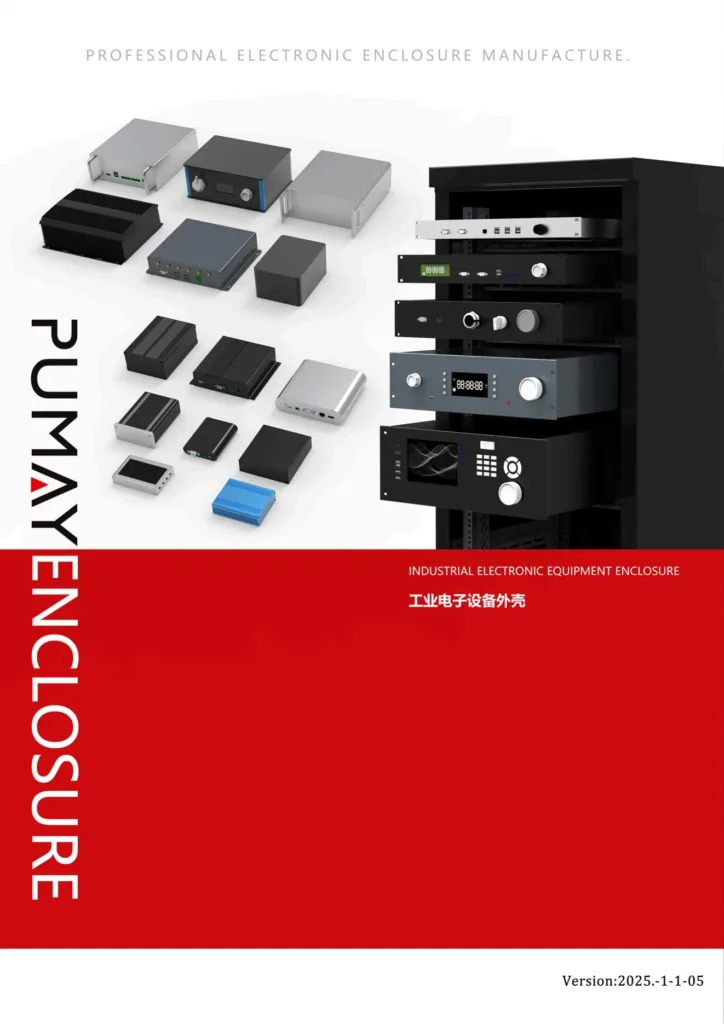Custom aluminum enclosures offer tailored solutions1 for industries such as electronics, industrial automation, telecommunications, and aerospace. Unlike standard enclosures, custom designs provide optimized functionality2, aesthetic appeal, and enhanced protection3 for specific applications.
Let’s explore the steps to create a custom aluminum enclosure and the advantages it offers.
Steps to Create a Custom Aluminum Enclosure
1. Requirement Analysis and Concept Design
The process starts with understanding the application needs, technical requirements, and design preferences4.
Key Questions to Address:
- What internal components5 need to be housed (PCBs, power supplies, displays)?
- What environmental protection is required (IP rating, corrosion resistance)?
- Are there thermal management or EMI shielding6 requirements?
Output:
Concept sketches or CAD drawings
Preliminary specifications (dimensions, material, surface finish)
- -
2. Material Selection and Structural Design
Choose the appropriate aluminum alloy7 and structural features based on strength, thermal conductivity, and corrosion resistance.
Common Materials:
- 6063-T5 Aluminum: High strength and excellent corrosion resistance.
- 6063-T5 Aluminum: Ideal for precision extrusions with superior surface finish.
Structural Design Elements:
- Integrated heatsinks8 for thermal management.
- Modular designs9 with removable panels for easy access.
- Sealing features for waterproof or dustproof enclosures (IP65–IP68).
Tools:
3D CAD modeling to visualize the enclosure and ensure component fit.
Finite element analysis (FEA) for stress testing and thermal simulation.
- -
3. Prototype and Testing
Create a prototype to validate the design before mass production.
Prototyping Options:
- CNC Machining: High precision for functional prototypes.
- 3D Printing: For rapid visualization of complex shapes.
Testing:
Thermal and airflow testing for heat-sensitive components.
Ingress protection (IP) testing for outdoor enclosures.
EMI/RFI shielding tests to ensure electromagnetic compatibility.
- -
4. Surface Treatment and Finishing
Apply surface treatments to enhance protection and aesthetics.
Common Surface Treatments:
Anodizing: Corrosion protection and color customization.
Powder Coating: Durable finish with various textures and colors.
Laser Engraving: For labels, logos, and precision markings.
- -
5. Production and Quality Control
Once the design is validated, the enclosure moves into production.
Manufacturing Techniques:
- Extrusion: Ideal for consistent cross-sectional designs.
- CNC Machining: Ensures high precision for custom openings and features.
- Sheet Metal Fabrication: For complex shapes and large enclosures.
Quality Control Measures:
Dimensional inspection with CMM (Coordinate Measuring Machine).
Surface quality checks for scratches and defects.
Assembly fit and functional tests to ensure product reliability.
- -
Advantages of Custom Aluminum Enclosures
1. Perfect Fit for Internal Components
Custom enclosures are designed to match your specific PCBs, power supplies, and connectors, minimizing space and improving functionality.
Benefit: Reduces the need for modifications or adapters.
2. Enhanced Thermal Management
Aluminum’s high thermal conductivity, combined with custom heatsink integration, helps maintain stable operating temperatures.
Ideal for: Power electronics, LED drivers, and amplifiers.
3. Durability and Corrosion Resistance
Custom aluminum enclosures can be tailored for outdoor, marine, or industrial environments.
Surface treatments like anodizing or powder coating protect against corrosion and wear.
Example: IP67-rated enclosures for outdoor telecom equipment.
4. EMI/RFI Shielding
Aluminum enclosures naturally provide electromagnetic interference (EMI) shielding, ensuring safe operation for sensitive electronics.
Benefit: Protects against external interference, improving reliability in telecommunications and medical devices.
5. Aesthetic and Brand Customization
Custom finishes, colors, and logos help align the enclosure with your brand identity.
Options:
Brushed aluminum finish for a sleek, modern look.
Custom logos and laser markings for professional branding.
- -
6. Scalability and Modular Design
Custom enclosures can be designed for future expansion and easy customization, reducing costs for new product iterations.
Example: Modular enclosures with interchangeable panels for different ports and connectors.
Custom aluminum enclosures offer a tailor-made solution that enhances product performance, durability, and aesthetics. By following a structured design and production process, manufacturers can ensure the enclosure meets specific technical requirements while maintaining cost efficiency. For industries like electronics, industrial automation, and telecommunications, custom enclosures are the key to reliable and high-quality products.
Discover how tailored solutions can enhance your project with custom aluminum enclosures, ensuring optimal performance and design. ↩
Learn about the importance of optimized functionality in custom aluminum enclosures and how it can improve your product's efficiency. ↩
Explore the advantages of enhanced protection in custom aluminum enclosures to safeguard your valuable equipment effectively. ↩
Exploring this resource will provide insights into effectively gathering and analyzing application needs and technical requirements for design projects. ↩
This link will help you understand the various internal components essential for housing in electronic devices, enhancing your design knowledge. ↩
Discovering effective strategies for thermal management and EMI shielding can significantly improve the performance and reliability of your designs. ↩
Explore this link to discover the top aluminum alloys that meet your specific needs for strength, thermal conductivity, and corrosion resistance. ↩
Learn how integrated heatsinks can enhance thermal management in your designs, ensuring optimal performance and longevity. ↩
Discover the advantages of modular designs, including ease of access and flexibility in structural engineering applications. ↩





